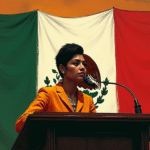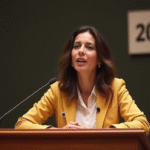Introduction
CAMBRIDGE – This year, despite not yet reaching its midpoint, is already poised to be recorded in history books as one of extreme volatility driven by economic policy—not just in financial markets, but also in economic narratives and international relations. However, its ultimate destination remains uncertain.
Market Volatility and Economic Policy
The S&P 500 nearly entered a bearish phase, dropping almost 20% from its recent peak, only to recover and finish nearly unchanged for the year. Bond yields have fluctuated due to an extremely volatile macroeconomic outlook. The probability of a US recession started the year below 10%, peaked at nearly 70% in April, and fell back below 40% just a month later.
The United States, being the world’s largest economy with mature institutions, deep financial markets, and issuing the global reserve currency, is where others entrust their savings and wealth. Consequently, what happens in the US reverberates globally. It’s no surprise that “measures of uncertainty” for businesses and households have soared this year, as Bloomberg columnist Justin Fox notes, “uncertainty has never felt more uncertain.”
Trade Policy Volatility
The immediate cause is the volatility of US trade policy, which has triggered reactions from systemically important countries. However, trade is not the only issue; as the US and other nations push for debt and deficit limits, bond watchdogs have awakened from their slumber. This has undermined traditional correlations between US equities, bonds, and currency, and recent attempts to trim or reform the public sector have raised more questions than answers.
Diverse Economist Opinions
Amidst this backdrop, there is a notable diversity of opinions among professional economists. Some view the recent easing in US-China trade tensions as a fundamental shift in the Trump administration’s approach (triggered by resource exhaustion fears), while others see it merely as a temporary respite before further challenges.
The same applies to US-Europe trade relations. Some perceive Trump’s 50% tariff threat on EU imports as the start of a retaliation process with adverse direct and indirect effects on both economies and the world. However, especially with the postponed initial deadline, others view it as another signal that the US is pursuing a “scale up to scale down” strategy.
Transformative Changes or Temporary Turbulence?
The overarching question is whether the US and global economies are undergoing radical transformation. Has the toothpaste tube already run dry, or will current agitation resemble the COVID-19 period when we largely returned to square one?
Key Factors Shaping Our Future
- Tariffs: Recent twists and setbacks might imply that the primary goal of US authorities is to achieve a fairer trade system through a “scale up to scale down” approach. If so, this objective should subordinate some declared priorities (contradictory): generating substantial revenue and significant manufacturing relocation.
- Bond Market: The return of bond vigilantes has significantly increased long-term government bond yields, with Japan’s yield soaring to historical highs. Given the potentially disruptive implications, a rise in bond yields could act as preventive discipline; alternatively, markets and economies might become even more vulnerable to sudden dislocations in the cost of funding for governments, businesses, and households.
- Economic vs. National Security Conflict: Behind the tariff tangle lies a tug-of-war between moderate economic officials supporting agreements and hawks who believe short-term difficulties are necessary to enhance US security, particularly by hindering China’s development.
- Reaction from Other Countries: The US policy-induced volatility is leading some to question their deep-rooted commitment to a US-centered trade and payments system. To what extent has basic trust eroded? Could the loss of US credibility accelerate the development of alternative systems?
- Corporate Behavior: Will CEOs merely hoard inventories during this period or seek deeper changes? Do they trust their ability to pass tariff costs onto consumers? Has their perspective on capital expenditures radically shifted?
Beyond This Year: Broader Structural Changes
Extending the analysis beyond this year, we confront an even greater challenge. Instead of viewing tariff-induced volatility as the primary cause of economic uncertainty, we should see it as an accelerator of broader structural changes. Some traditional economic tools were already being undermined by shifts in the international trade system, supply chain diversification, and (in many cases) prioritizing resilience over efficiency.
Security and domestic considerations had surpassed economic ones. Trust in national and multilateral institutions was eroding. This broader framework reinforces the idea that the global economy is on an uncertain path towards an unknown destination.
We might be hurtling toward recession, stagflation, and the fragmentation of global trade and payment systems. Alternatively, we could be in the early stages of a Reagan or Thatcher-style reconfiguration that, over time, will bring greater productivity gains, higher growth potential, less threatening deficits and debt, a fairer trade system, and a more stable payments system.
Even optimists should acknowledge that, at best, it’s a 50-50 situation. Meanwhile, everyone must gather the resilience needed to endure prolonged uncertainty and maintain flexibility for future scenarios vastly different from today’s.
About the Author
Mohamed A. El-Erian
President of Queens’ College, University of Cambridge; Wharton School Professor, University of Pennsylvania; Author of ‘The Only Game in Town: Central Banks, Instability, and Avoiding the Next Collapse’ (Random House, 2016); Coauthor (with Gordon Brown, Michael Spence, and Reid Lidow) of ‘Permacrisis: A Plan to Fix a Fractured World’ (Simon & Schuster, 2023).
Copyright: Project Syndicate, 1995 – 2025
www.project- syndicate.org






